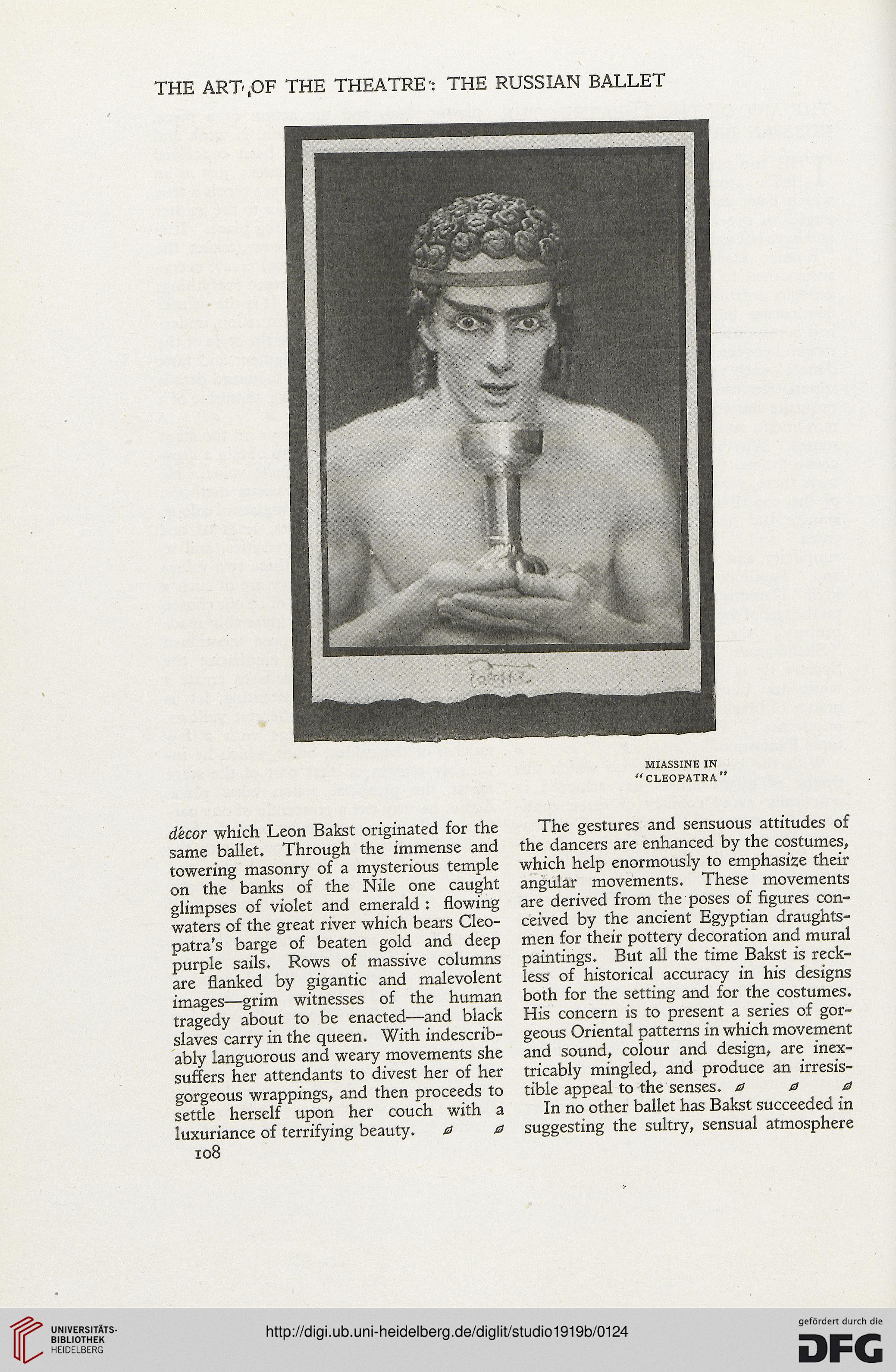THE ART ,0F THE THEATRE': THE RUSSIAN BALLET
MIASSINE IN
“CLEOPATRA”
decor which Leon Bakst originated for the
same ballet. Through the immense and
towering masonry of a mysterious temple
on the banks of the Nile one caught
glimpses of violet and emerald : flowing
waters of the great river which bears Cleo-
patra's barge of beaten gold and deep
purple sails. Rows of massive columns
are flanked by gigantic and malevolent
images—grim witnesses of the human
tragedy about to be enacted—and black
slaves carry in the queen. With indescrib-
ably languorous and weary movements she
suffers her attendants to divest her of her
gorgeous wrappings, and then proceeds to
settle herself upon her couch with a
luxuriance of terrifying beauty. 0 0
108
The gestures and sensuous attitudes of
the dancers are enhanced by the costumes,
which help enormously to emphasise their
angular movements. These movements
are derived from the poses of figures con-
ceived by the ancient Egyptian draughts-
men for their pottery decoration and mural
paintings. But all the time Bakst is reck-
less of historical accuracy in his designs
both for the setting and for the costumes.
His concern is to present a series of gor-
geous Oriental patterns in which movement
and sound, colour and design, are inex-
tricably mingled, and produce an irresis-
tible appeal to the senses. 000
In no other ballet has Bakst succeeded in
suggesting the sultry, sensual atmosphere
MIASSINE IN
“CLEOPATRA”
decor which Leon Bakst originated for the
same ballet. Through the immense and
towering masonry of a mysterious temple
on the banks of the Nile one caught
glimpses of violet and emerald : flowing
waters of the great river which bears Cleo-
patra's barge of beaten gold and deep
purple sails. Rows of massive columns
are flanked by gigantic and malevolent
images—grim witnesses of the human
tragedy about to be enacted—and black
slaves carry in the queen. With indescrib-
ably languorous and weary movements she
suffers her attendants to divest her of her
gorgeous wrappings, and then proceeds to
settle herself upon her couch with a
luxuriance of terrifying beauty. 0 0
108
The gestures and sensuous attitudes of
the dancers are enhanced by the costumes,
which help enormously to emphasise their
angular movements. These movements
are derived from the poses of figures con-
ceived by the ancient Egyptian draughts-
men for their pottery decoration and mural
paintings. But all the time Bakst is reck-
less of historical accuracy in his designs
both for the setting and for the costumes.
His concern is to present a series of gor-
geous Oriental patterns in which movement
and sound, colour and design, are inex-
tricably mingled, and produce an irresis-
tible appeal to the senses. 000
In no other ballet has Bakst succeeded in
suggesting the sultry, sensual atmosphere





